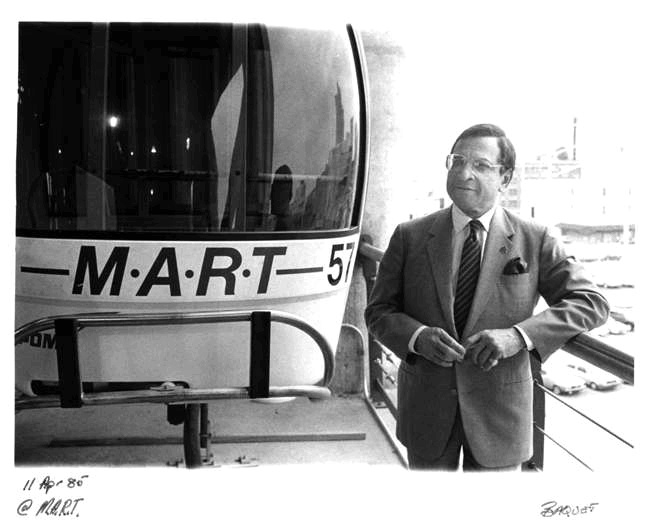|
Today in New Orleans History |
|
|
April 11


 Plans for the gondola were initially approved
by the city on May 6, 1982. It was developed by the Mississippi Aerial River Transit-Perez Inc., or MART-Perez, which
included noted local architect August Perez III. In 1983, the Banque de l'union européenne of Paris provided financing
for the project through an $8 million loan. In foreshadowing the future problems the gondola would face, on its maiden crossing,
after being blessed by Archbishop Philip Hannan, the ride would temporarily stall. The ride took four minutes to complete
and crossed over 300 feet above the Mississippi River, and had a maximum capacity of 2,000 passengers per hour. During
the fair, this was billed as the signature ride of the exhibition; however, it drew only 1.7 million riders, half as many
as projected. Built to showcase a form of non-polluting commuter transit, after the fair the system was open for use by
commuters traveling from Algiers in the West Bank to the Warehouse District across the river. By April 1985, the system would
shut down due to low ridership. Later in 1985, the Banque de l'union européenne would file suit against MART-Perez
when they defaulted on the $8 million loan. As a result of nonpayment, in 1986, MART was ordered by a federal court to pay
the bank $5 million, plus $1.2 million in interest and attorney fees. However, MART never made a payment, and as a result,
the gondola was seized by the United States Marshals Service in June 1989. After the seizure, the system was put up for auction
in August with New York City businessman Moey Segal placing the winning bid of $1.6 million. Segal intended to deconstruct
the system and relocate it to Corpus Christi, Texas. It was intended to transport tourists from the primary hotel area to
the Texas State Aquarium across a ship channel. Due to litigation, the proposal to move the system to Texas was dropped
and Segal transferred its ownership to the 7349 Corp in 1990. Following the failed proposal to relocate the gondola, the
system was the site of several, notable local events prior to its demolition. On January 21, 1993, Christopher Vincent base-jumped
(jumped with a parachute) from the top of the East Bank tower twice. He completed the stunt for the first time at approximately
10:30 a.m. and again later that afternoon at approximately 2:30 p.m. Each time he was successful in landing on the Mississippi
River levee. On August 19, 1993, four Greenpeace activists were successful in hanging a banner from the system that stated
"Break the circle of poison" in protesting the shipment of toxic pesticides through the Port of New Orleans.  

To receive an update for each day in New Orleans
history, join our facebook page
- Today in New Orleans History
Suffragette & Business Leader Vira Boarman Whitehouse, born in New Orleans on September
16, 1875, was the owner of the Whitehouse Leather Company and an early proponent of birth control. She was the daughter of
Robert Boarman and Cornelia Terrell, was educated in New Orleans, and attended Newcomb College. She married James Norman
de Rapelye Whitehouse, a New York stockbroker, on April 13, 1898. She was chairman in 1913 of the publicity council of the
Empire State Campaign Committee and in 1916 of the New York State Woman Suffrage Party (NYSWSP). She was a leader in securing
suffrage for New York women in November 1917. In 1918, she became director of the Swiss office of the Committee on Public
Information. She reported her experiences in A Year as a Government Agent (1920). In 1921 she bought the Buchan-Murphy
Manufacturing Company, a leather business, renamed it the Whitehouse Leather Products Company, Inc., and reorganized it
with herself as president. She managed the company for eight years, reducing the work week from 48 hours to 44 hours, among
other changes. In 1925 she was elected a member of the Democratic County Committee from Manhattan's 15th Assembly District.
In 1926 she became Chairman of the Independent Women's Committee for Judge Wagner. She sold her leather company before
the stock market crash of 1929. Mrs. Whitehouse died at her home in New York City on April 11, 1957.
(WIKI)
The illustration “Federalists evacuating civilians from Lake Pontchartrain,
Louisiana in 1863 during the America Civil War”, were published in the Illustrated London News (ILN) on April
11, 1863. (LP)
|
|
|

To receive an update for each day in New Orleans history,
join our facebook page - Today in New
Orleans History.
Analytics |


